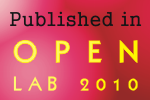This month marks the end of a two year journey of exploration, discovery, wonder, and advocacy. March 31st marks the end of International Polar Year (IPY) 2007-2009.
In fact, Wednesday, March 18, 2009 is International Polar Day celebrating Polar Oceans. The ocean or marine ecosystem is a very important part of the polar biome. The animals of the polar regions - both the north and south poles - depend on a variety of seafood species for nutrition - such as krill, fish, ocean birds, and ocean mammals. The polar food webs are complex and interesting. And a perfect text for IPY and International Polar Day - Polar Ocean is this book. Title: Polar Worlds - Life at the ends of the earth
Title: Polar Worlds - Life at the ends of the earth
Author & Illustrator: Robert Bateman
Publisher: Scholastic/Madison Press
I became a fan of Robert Bateman when I read his book Birds of Prey. He is a very talented artist. All of this sketches and painting of the Arctic and Antarctic animals look very life-like, more like photographs than paintings. The book gives a very thorough introduction to all of the types of animals that call the Arctic and Antarctic home. Though both of these polar regions are cold and remote, they are very different from one another.
The Arctic region has been inhabited by people for many thousands of years. The people of these many northern nations have had to survive the cold and depend on animals such as the polar bear, caribou, sheep, whale, and water birds for food, clothing, and fuel.
The Antarctic hasn't had permanent human settlements, but human impact has been strong for a few hundred years. Sailing and whaling were once very important industries in the southern polar regions. But thanks to protective laws the oceans of the Antarctic region are now protective and refuge area for sea animals, especially whales. Bateman introduces readers to the many bird and seal species that call the South pole and its waters home.
What I especially like about Bateman's artistry is his ability to accurate portray animal anatomy. With his pen and colors he captures the shape and movement of animals very well. I also enjoy his very-easy to read text. This book is intended for young reader, intermediate school grades, he can also maintain the attention of adults, too. It's a great science book for your school or home library.
Plus, as I mentioned during Week of the Blue, marine habitats and animals are in serious jeopardy. I enjoy learning about nature and animals and I love sharing what I learn with you. I hope I also inspire in you a desire to make our world a better ecosystem for all - humans and wildlife. I hope you join with me to help protect the endangered polar bear. Encourage the United States Secretary of the Interior, (the government department responsible for protecting our common heritage resources) -Ken Salazar to put into effect regulations to provide the polar bear the legal protections it needs to survive. This is a perfect community service activity for celebrating International Polar Day - Polar Oceans. After all, polar bears depend on the polar oceans for survival.
 Click here to find out more and sign the petition.
Click here to find out more and sign the petition.Thank you.






















No comments:
Post a Comment